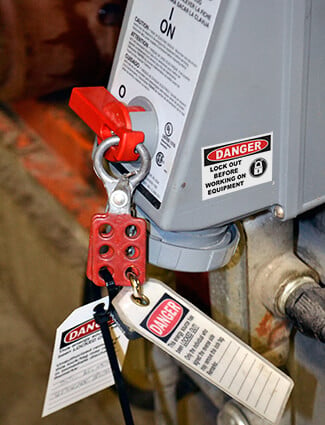New Troubles Brew for Beverage Manufacturers
03
February,
2023
2 MINUTE READ

Dangers lurk for those who will work for beer. Record heat, production demands, wildfires, and the novel coronavirus pandemic are contributing to brutal conditions for the brewery industry's frontline workers. Despite the pressure of new and existing hazards, breweries can use simple tips and best practices to help keep production, quality, and safety programs smooth.
Strange Brewery Times
According to the Brewer's Association, breweries throughout the U.S. produce more than 215 million hectoliters of beer, from bright lagers to frothy ales to strong stouts. Although working in a brewery seems like a dream for some, it's still production work, and there are several hazards brewers face daily.
Ammonia, slips and falls, burns, confined spaces, and electricity are just a few examples of beer production hazards. Common injuries and illnesses in breweries are overexertion, strains and sprains, and exposure to harmful substances. Throw in new safety necessities such as social distancing, additional washing stations, and personal protective equipment changes, and navigation gets a bit more complex.
"Like other manufacturing environments, there are a number of pieces of processing equipment that also create their own heat, such as steam generators, pumps, and boiling liquid, to name a few," according to Mother Earth Brew. The popular San Diego-area brewery said it had to adjust a couple of times during the COVID crisis and summer heatwaves. "Temperatures can easily spike up to 10 or 20 degrees over ambient temperature if you include the body heat of dozens of workers sweating it out inside."
Refresh Safety Programs
Managing risks and improving safety in the workplace benefits any business, especially during times that fluctuate. Focusing on safety helps save money over the long-term by reducing insurance costs, and it creates less downtime and product loss. When breweries control the top risks and maintain compliance, there is more control over their impact on the business.
Here are several key focuses to improve safety and efficiency as new hazards arise:
- Weatherize: Record heat and strikingly cold seasons can wreak havoc on businesses that ill prepare. Try to plan for extreme cold or hot weather including having adequate batteries and backup power supplies, emergency water, and emergency plans. Have a plan for high winds and even after-storm damage. Evaluate PPE as additional items may be necessary for winter. Confined spaces can feel even more intense during hot days and might need additional controls.
- Hygiene: Stock and keep clean eyewash stations, hand washing and sanitation stations, and first-aid areas. Keep in mind the weather, emergencies, and hazards workers face and stock items appropriately. Separate and mark chemicals for cleaning from those meant for production.
- Inhalation: Use engineering and/or procedural controls and PPE for dust, smoke, and fumes. Be mindful of temperature for the storage of some chemicals and some hot work. Also, think about the workspace for specific tasks to prevent worker exposure. Make sure pipe contents are labeled for maintenance.
- Equipment: Re-evaluate the heat and sanitation of workplace equipment, such as brewing systems, canning lines, fermenters, tanks, secondary storage containers, powered trucks, and more. Ensure there are individual lockout tagout programs and controls for each piece of equipment. Monitor pressure and temperature gauges frequently.
In beverage production, maintaining a clean and safe environment is critical to product consistency and quality. Of course, challenges can happen unexpectedly. Keep operational bliss as new hazards or changes arise by communicating to workers through signs, labels, and floor markings. Enhance working and walking surfaces with floor supplies that are supportive in the work environment, such as high visibility markings for low-light areas or coarse surfaces for better grip to prevent slips and falls. Improve traffic signs, loading docks, and pedestrian work boundaries. Workers will know information about switches and wires when facilities have labels in place. Get workers involved in finding hazards and implementing suitable solutions, and keep training frequent and up to date.
RELATED RESOURCES

Technology in Construction: From the Ground Up
The increased aligning of construction technology and management are improving projects all around - ...
Read
Corporate Disclosure Lags on Safety Metrics Reporting
Global companies are tracking workplace injury and safety data but are not making it public. Having ...
Read
Beware of Introducing New Hazards
Risk assessments need to be thorough and regular for all changes in the workplace, even when those changes ...
Read.png)



